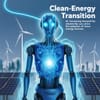The article explores how the explosion of artificial intelligence (AI) infrastructure is reshaping the clean-energy landscape. On one hand, AI-driven data centres demand immense power, which has led to increased interest in new fossil-fuel builds—raising fears that AI could undermine decarbonisation efforts. On the other hand, AI also offers tools to help accelerate the transition to renewables, by improving demand-response, predicting output from solar and wind, and enabling more efficient grid operations.
It points out that while solar and wind have been the headline renewables, they alone may not meet the growing and always-on energy demands of AI. Technologies such as advanced nuclear (including small modular reactors), fusion energy, and carbon-capture systems are highlighted as necessary complements. Tech firms, using their scale and capital, are increasingly investing directly in these “harder” clean energy niches, seeing AI-power demand as an anchor of business and climate strategy.
However, the article emphasises that this potential is not guaranteed: policy, permitting, infrastructure and investment frameworks must align for these clean technologies to scale. If AI growth simply drives more power demand met by gas or coal plants, then instead of aiding decarbonisation it could hamper it. The piece calls for regulators and governments to enable the conditions for low-carbon power to keep up with AI’s electricity appetite.
In conclusion, the intersection of AI and energy is becoming a pivotal battleground for the climate transition. If managed well, AI could act as a force multiplier for clean energy. If misaligned, it could become a drag. The article suggests that recognising and acting on this dynamic will be crucial for whether AI becomes part of the solution or part of the problem in the journey to net-zero.


